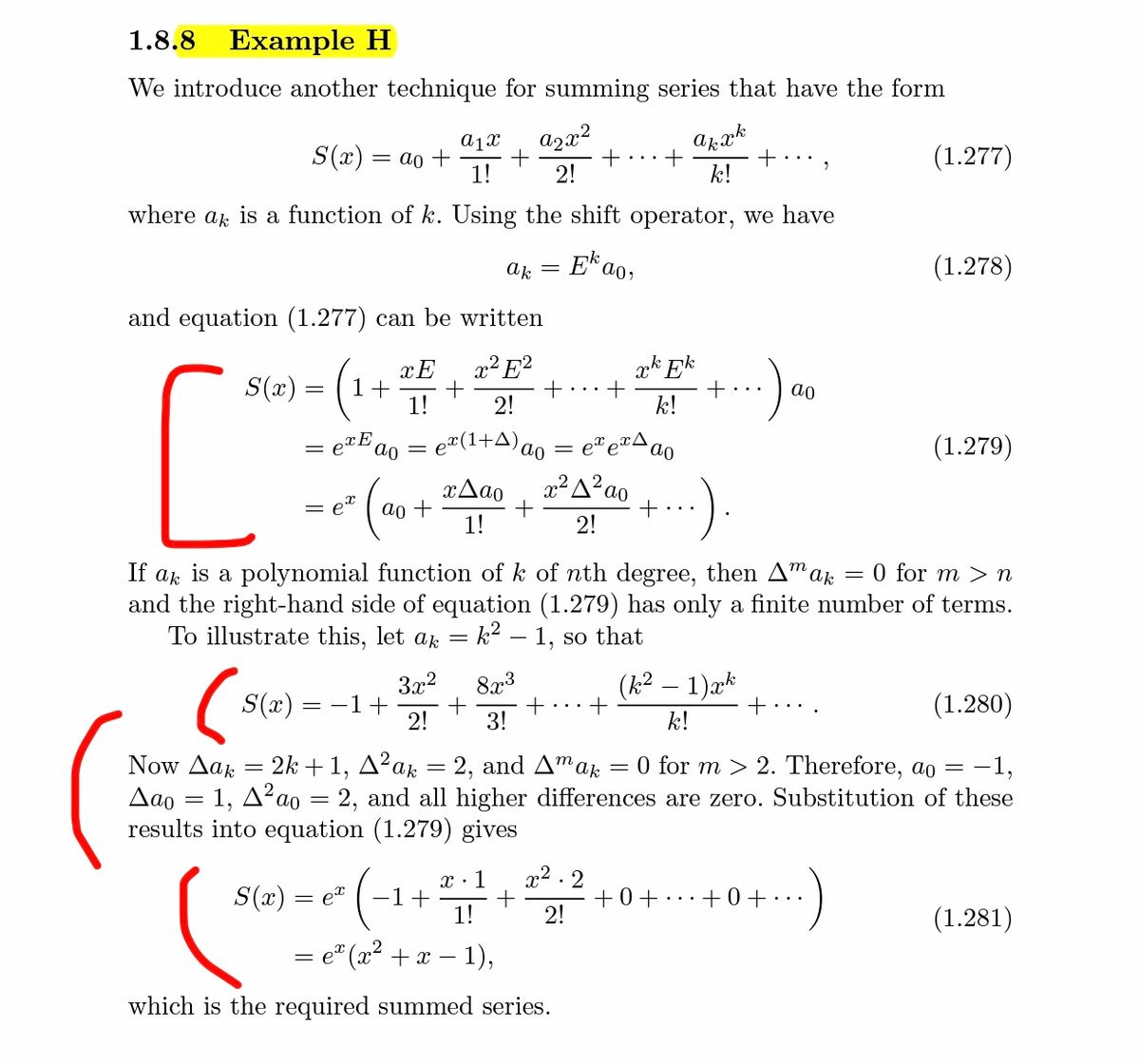Explain the determaine

n k? – 1, so that 3x2 8x3 + 2! (k2. 1)æk S(x) = = -1+ (1.280) 3! k! Now Aa = 2k+1, A²ak = 2, and Amar Aao = 1, A²ao = 2, and all higher differences are zero. Substitution of these results into equation (1.279) gives O for m > 2. Therefore, ao = -1, x:1 x2 . 2 S(x) = -1+ 1! +0+..+0+ 2! et •. (1.281) = e" (x2 + x – 1), which is the required summed series. "/>
Extracted text: 1.8.8 Example H We introduce another technique for summing series that have the form a1x S(x) = ao + 1! azx² + 2! arak + , k! (1.277) where ak is a function of k. Using the shift operator, we have ak E*a (1.278) and equation (1.277) can be written x² E? + 2! ak Ek S(x) = 1+ 1! ao k! = e#(1+A)ao (1.279) x2 A? ao + :) xAao ao + 1! 2! If ak is a polynomial function of k of nth degree, then A"ar and the right-hand side of equation (1.279) has only a finite number of terms. To illustrate this, let a 0 for m > n k? – 1, so that 3x2 8x3 + 2! (k2. 1)æk S(x) = = -1+ (1.280) 3! k! Now Aa = 2k+1, A²ak = 2, and Amar Aao = 1, A²ao = 2, and all higher differences are zero. Substitution of these results into equation (1.279) gives O for m > 2. Therefore, ao = -1, x:1 x2 . 2 S(x) = -1+ 1! +0+..+0+ 2! et •. (1.281) = e" (x2 + x – 1), which is the required summed series.